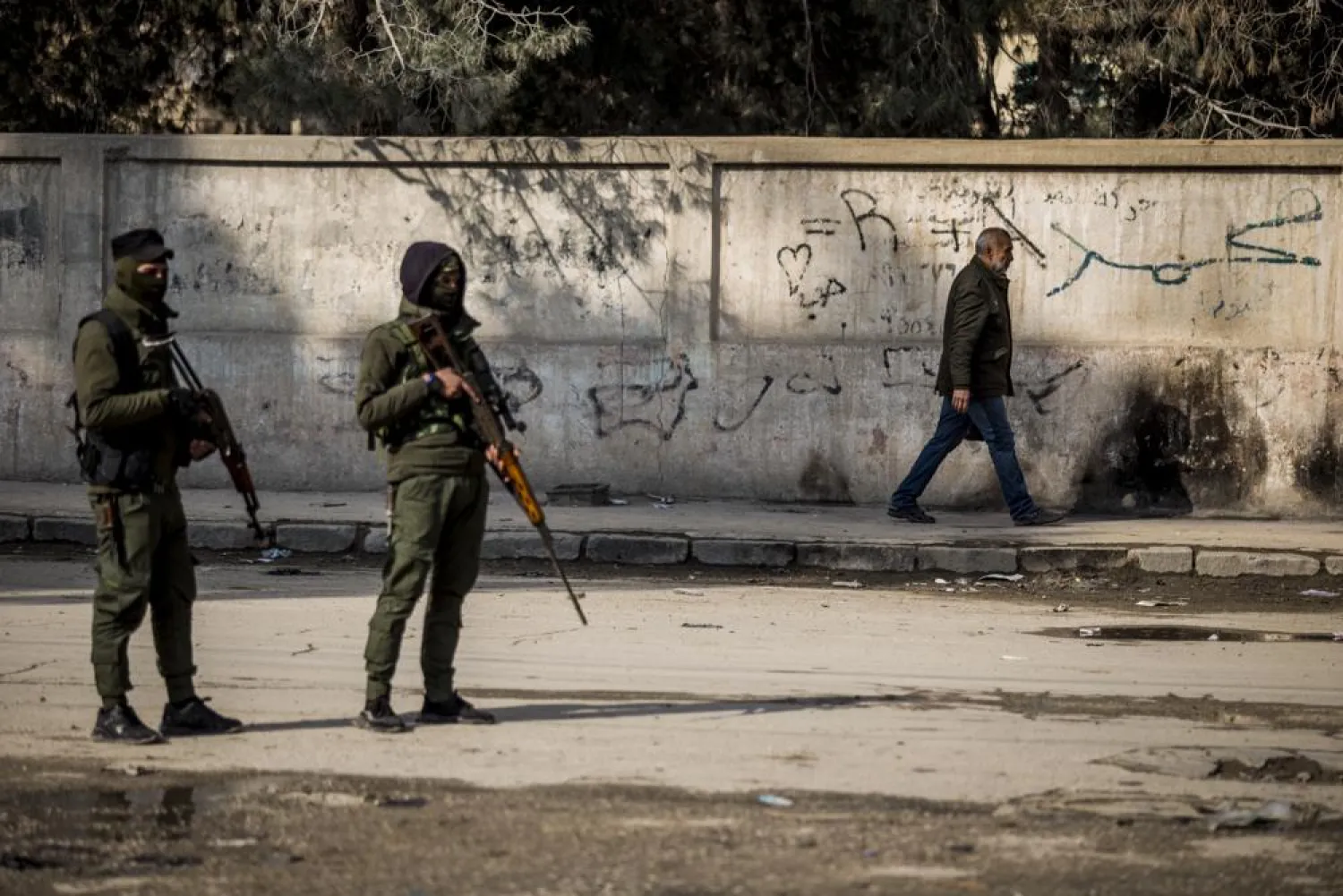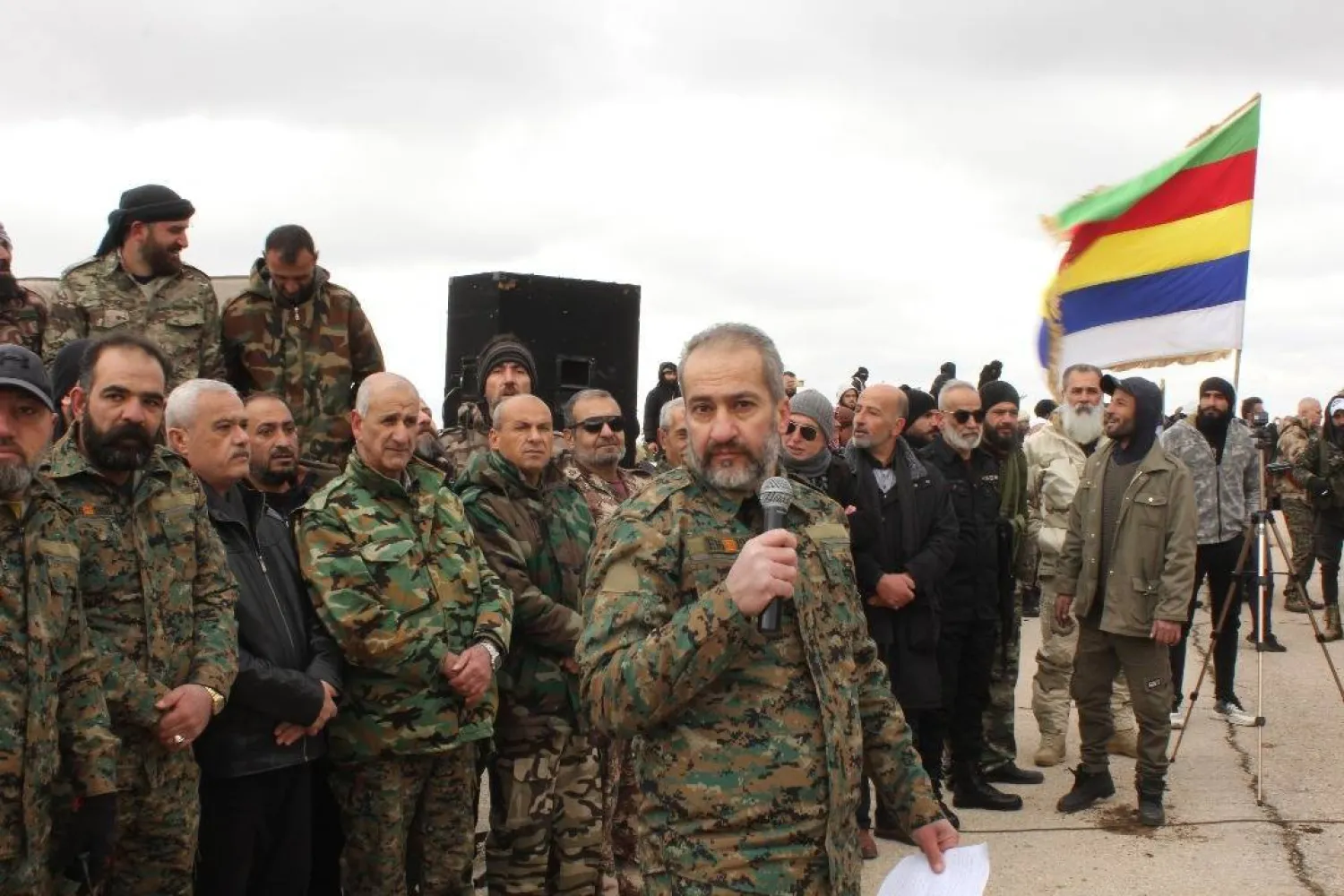Weeks after the long, furious battle with militants from the ISIS group over a prison in northeastern Syria, the mangled wreckage of a car used by suicide bombers still sat outside its perimeter. Cranes put in place new cement blast walls to close off the entrance.
Gaping holes remained in the prison’s outer wall, an ominous reminder of the ISIS inmates who escaped during the fighting.
The battle for Gweiran Prison is over; it took 10 days, but US-backed, Syrian Kurdish-led forces finally defeated the militants who attacked the facility in the city of Hasakeh, aiming to break free their comrades jailed inside, in the group’s largest and most stunning operation in years.
But the impact continues to reverberate. Residents in neighboring districts are locked down as Kurdish fighters hunt for fugitive militants hiding among them.
“Ask everyone here, they will tell you the same: We are terrified,” said Muna Farid, a mother of five who lives in the Gweiran neighborhood, which gives the prison its name — echoing the worries of dozens of residents over hidden ISIS milutants.
The region’s Kurdish administrators say the attack shows what they have long been saying: They are not getting enough help to face ISIS as it regains strength.
The Kurdish-led Syrian Democratic Forces say the Jan. 20 prison attack was not a surprise to them. Local intelligence sources had been showing a growing number of ISIS sleeper cells in the area. But they say they were hampered in acting because of multiple pressures, including conflicts with Turkey, insufficient international help and Syria’s economic crisis.
“The main reason that ISIS sleeper cells got enhanced and strong is because of international silence and weak support (for SDF) to stand against terrorism,” said Haval Qortay, head of the commando unit that fought ISIS at the prison, using his nom de guerre. “We are relying on resources that are not enough to fight.”
ISIS suffered a blow with the US raid Thursday in northwest Syria that killed the group’s leader, Abu Ibrahim al-Hashimi al-Qurayshi. But it is unlikely to derail the group’s persistent insurgency in Iraq and Syria since its command became much more decentralized after the group’s territorial defeat two years ago.
“For some time now ISIS top leadership have been providing broad, strategic guidance to the global organization, but not day-to-day command and control,” said Dareen Khalifa, a senior analyst at the International Crisis Group. “ISIS’s various elements will continue implementing their local insurgencies until the new successor is named.”
Since ISIS lost its last hold on any territory in 2019, its militants have gone underground in cells that have been carrying out low-level hit-and-run attacks in Syria and Iraq, mainly targeting security forces. Those attacks have been growing, raising fears the group is gaining momentum.
In northeast Syria, governed by a Kurdish-dominated administration, the SDF has been the main force trying to suppress ISIS, with the backing of several hundred US troops.
At the same time, the SDF has to watch over some 10,000 captured ISIS militants in around two dozen detention facilities — including 2,000 foreigners whose home countries have refused to repatriate them. It also oversees some 62,000 family members of ISIS militants, mostly women and children in al-Hol camp. Many of those family members remain die-hard ISIS supporters, and the camp has seen bouts of militant violence.
Khalifa said the SDF has done a “remarkable job” in fighting ISIS and in stabilizing the areas it captured from the group during the long campaign that brought down the “caliphate.”
But she said it is also hampered on multiple fronts. Particularly, its frequent clashes with Turkey, which views the Kurdish faction running eastern Syria as a terrorist group, undermine the anti-ISIS fight. Also, many Arab residents of the region don’t trust that the SDF will remain, fearing the Americans will pull out or the Damascus government will regain control of the area — so they are reluctant to endanger themselves by providing intelligence against militants.
Gweiran Prison, the biggest of the SDF-run prisons, was set up in a school campus, underscoring how the SDF has had to cobble together detention centers for the militants.
On Jan. 20, around 200 militants attacked the prison, in coordination with a riot by inmates inside. The attackers broke in, freed some prisoners, took guards hostage, and held out against SDF fighters for days, even as aircraft from the US-led coalition struck their positions repeatedly.
At least 121 SDF fighters and prison guards and more than 380 militants were killed before the SDF finally restored full control.
The commando chief Qortay said the SDF had long been aware the prison would be an ISIS target and had been receiving intelligence of a growing number of ISIS sleeper cells in the area. Some militants seamlessly pass for civilians at checkpoints, he said. Others move into towns, rent apartments and maintain a low profile.
When the attack erupted, Qortay’s units formed a belt around the prison and the nearby residential neighborhoods. During the fighting, some ISIS members hid in civilian homes, slowing the SDF as it tried to avoid civilian casualties, Qortay said.
Now the prison is fully under SDF control, he said, but he expects more attacks. Militants remain hidden, literally, across the street. SDF troops are still conducting raids to find sleeper cells, relying on intelligence from residents.
One resident of Gweiran neighborhood told The Associated Press how he informs the local authorities whenever he sees a stranger on his street. He has told them of at least eight since the prison break, including one hiding in a water tank.
“I know everyone in this area, if I see a new face I report them directly,” he said. The AP is not identifying him for his safety.
But residents are also angered by the SDF’s clampdown on three neighborhoods near the prison. With guns slung, SDF soldiers at the districts’ entrances forbid locals from leaving until their areas are cleared of militants.
Supplies are allowed in, but residents say it’s not enough. Dozens complained of shortages in food and drinking water. Mothers said they didn’t have enough milk for their babies or food to feed their families.
Fatma al-Khodr sat on the steps outside her home on the phone, begging a neighbor for any leftover bread.
“We are the ones who are suffering the most after this attack. ... We fear ISIS, but we also need water,” she said.
The militants’ ability to carry out such a major attack even amid intelligence warnings was a stinging blow to the SDF. The force is hoping it will show world powers that it needs more support, after long complaining it is left largely on its own to prevent the group’s revival in Syria.
On a recent day, the clouds hung low at a funeral for 23 of the SDF soldiers killed in the prison battle. Thousands came to pay their respects. Among them, Ibrahim Ismail, a merchant from the area.
“Their deaths were a shock to us all,” he said.
Then the crowd fell silent in remembrance. Portraits of the dead were held high as coffins draped in the region’s Kurdish colors passed along the sea of human bodies.









